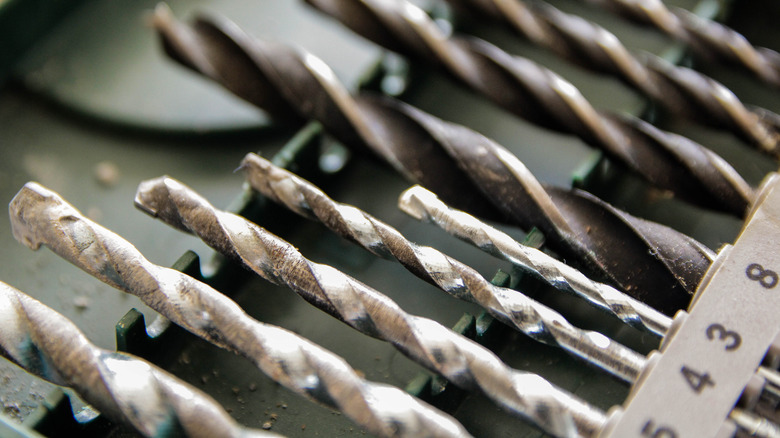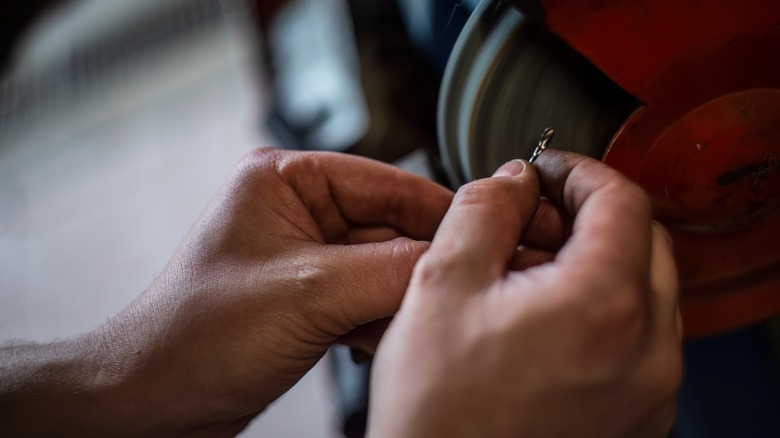The Common Drill Bit Sharpening Mistakes You'll Want To Avoid
A drill is a tool that every homeowner should have for its versatile use, but it doesn't come without necessary maintenance. Sharpening your dull drill bits to bring them back to life is essential to ensure the longevity of your tool, as well as to make sure it functions as it's intended. And while you can sharpen your drills at home, be forewarned that there are some common drill bit sharpening mistakes that you'll want to avoid to make sure you're not compromising the overall integrity of the drill itself. They include over-sharpening, overheating the metal, and positioning it incorrectly.
Dull drill bits won't do the best job — or may not drill through the material altogether. You also run the risk of overheating your drill, since a dull bit will make the drill run harder to get a hole through. Effectively, dull drill bits may shorten the lifespan of your machine. And whether you'd like to admit it or not, there can also be instances of broken drill bits, too (don't worry, we won't tell anyone). Many handy folks may despair and think that's the end of that piece. However, it is possible to resharpen and salvage those drill bits, as so long as you avoid these sharpening mistakes.
Avoid these mistakes with the grinding stone or hand file
First, depending on the bit, you run the risk of cutting away too much of one particular side over the other. For the most part, your bit should optimally be at a 60-degree angled point, so use a square to maintain the point at the center of the bit, so it doesn't skew one way or the other. A mis-sharpened point will make for major frustration in future projects or render the bit unusable. Second, if you're using a grinding wheel to sharpen your drill bits, watch the temperature of the bit itself. You risk of overheating the metal and making it brittle, so periodically cooling the bit down by popping it into some cool water will help uphold the material through the sharpening process. Remember to never let the tip of the bit touch the grinding stone.
Of course, you can sharpen drill bits without a heavy-duty tool by using a hand file, instead. If you choose this route, make sure you secure the bit in such a way that the point is pointed upward — a clamp should work — so that you can sharpen it evenly. This way is a fair bit more labor intensive than using a grinding stone, but you'll be able to check on the point more periodically for a more even sharpening. Whichever method you choose, the most important part is maintaining that center point, and with that in mind, your drill and drill bits will be ready for many uses to come.

